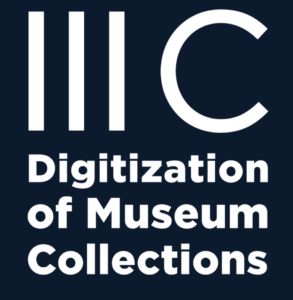
Context
Copyright can be challenging for cultural institutions (or “GLAM“ for Galleries, Libraries, Archives and Museums) when pursuing digitization and dissemination activities, as copyright governs whether a given work can be used and if so, how (as shown in recent studies for museums, archives or libraries). These challenges lead to a need to support legislative and/or policy changes or at least to clarify the rules, so as to avoid under-exploiting collections at the expense of society ultimately (a recent study concluded that 20% of the collections of European museums are available online).
In a policy paper, copyright and art-law experts led by the author clarified the general copyright law principles applicable to stakeholders dealing with digital cultural heritage worldwide and formulated recommendations, addressed to policy-makers, to facilitate their digital activities. The main goal of the paper is a call for action and cooperation towards policy-makers and professionals to unlock the potential of digital collections. The paper is divided into three parts, whereby each underlines who shall take action: national legislators in Part I (sometimes cultural institutions and international organizations as well) and cultural institutions with a code of conduct and an ADR procedure in Parts II and III.
The Policy paper does not aspire to be carved out in stone but rather represents a work-in-progress that can be updated into a 2.0 version with further considerations (e.g., use of indigenous content, model contracts and/or national laws on limitations and exceptions). The initial pre-print version was drafted with the collaboration of academics from different universities and led to an international conference in 2020 in Geneva. This post summarizes these findings.
Policy Proposals (Part I of the Policy Paper)
In Part I, we developed a set of 13 proposals regarding digitization (Proposals 1-6) and dissemination of works (Proposals 7-13). These address national and international legislators, as well as policymakers in the broader sense. They can be mostly implemented by clarifying and interpreting the existing legal framework.
Proposal 1. Clarify in the law that certain acts of reproduction conducted as part of a GLAM core public mission do not infringe copyright. National policymakers should adopt, or reaffirm limitations and exceptions (“L&Es“) to the right of reproduction, according to which GLAM are able to make digital reproductions of their collection, when performed as part of the GLAM’s core mission. What constitutes a core public mission should be first agreed upon per jurisdiction after consultation with the relevant stakeholders (including GLAM, artists, CMOs and the competent public authorities).
Proposal 2. Statutory limitations and exceptions for the benefit of cultural institutions should be given a mandatory character. National policymakers should ensure that such L&Es are given a mandatory character, in the sense that technological protection measures (“TPMs”) or unilateral contractual clauses (e.g. “take-it-or-leave-it” clauses) that override L&Es should be unenforceable.
Proposal 3. Facilitate effective collective licensing of rights, including where possible, through extended collective licensing systems. National policymakers should promote extended collective licensing (“ECL”) models (i.e. licenses that extend to non-member rights holders unless they have opted-out), at least for works that are problematic from a management standpoint, such as orphan works, out-of-print works and out-of-commerce works (as shown by studies). ECL must work internationally and its fees must be adapted to the category of user groups and materials (e.g. archival fonds shall not be subject to the same remuneration as unique artworks, as advocated by scholars). In the absence of an effective ECL model in place, L&Es shall apply instead (see Proposal 1).
Proposal 4. Minimize database rights to favour access to and use of digital works. National policymakers should review existing sui generis database rights or similar rights, when they exist, in order to avoid limiting access and use of public domain works. GLAM, who benefit from sui generis database rights where they exist (as creators of databases), should be encouraged to generously license them to allow free access and re-use of their databases by third parties.
Proposal 5. No additional copyright protection granted to digitized materials. National policymakers should work towards eliminating the differences between digitized copies of 2D objects versus 3D artworks (which could be copyrightable, such as photographic paper or canvas that has a spatial extent), in order to avoid limiting access and use of public domain works. GLAM, in jurisdictions where digitized copies are copyrightable, should attempt to negotiate the necessary licenses with the initial rights holders to allow exploitation of these images by the public.
Proposal 6. Encourage GLAM to use digitized contents for machine-learning. National policymakers should take a clear stance regarding the use of digital collections for machine learning purposes. Such a clear stance could be achieved by specifying that such use does not constitute an infringement to copyright law based on existing exceptions (e.g. general or specific exception for text and data mining, or interpretation of copyright law). GLAM should get support (in terms of financial and technical resources as well as training programs), to unlock the potential of their collections.
Proposal 7. Clarify in the law that certain acts of communication to the public that are conducted as part of a GLAM’s public interest mission do not infringe copyright. National policymakers should adopt, or reaffirm L&Es to the right of communication to the public, according to which GLAM are able to display digital copies of their collections, at least for exhibition, education and research purposes (both onsite and online).
Proposal 8. No liability of GLAM if they comply with certain due diligence steps (akin to “safe harbor right statement“). National policymakers should encourage GLAM to establish a Code of Conduct, by specifying that such Code constitutes an international standard and that GLAM following the Code of Conduct benefit from a safe harbor protecting against abusive litigation. Rights holders would however keep the right to request injunctive relief (without damages) if/when they allege that these operations infringe their rights.
Proposal 9. Promote the development of national copyright guidelines or codes of professional practices for various uses of works by GLAM. Multi-stakeholder international organizations should promote commonly adopted guidelines and good practices which, when followed, would allow GLAM to benefit from a safe harbor (see Proposal 8).
Proposal 10. Reaffirm the targeting test for online GLAM to avoid the applicability of unexpected foreign laws. Policy-makers and/or courts should expressly reject the “access approach” (here, here and here) in favor of a “targeting approach“ in online copyright infringement cases, meaning an analysis of whether or not a website directs or targets its activities towards a specific country (irrespective of the fact that a website may be merely accessible in such country). GLAM should adopt a targeting approach for their online collections to avoid the applicability of unexpected jurisdictions or unexpected foreign laws.
Proposal 11. Develop an “open data” policy framework for GLAM. International sector-specific organisations, such as ICOM and WIPO, should adopt or promote measures that facilitate making cultural resources available as open data (e.g. by developing open data policy framework for GLAM, creating sector specific interoperable open licenses, and resolving IP challenges (see Proposals 1, 5, 7 and 12)).
Proposal 12. Promote the interoperability of different licensing models. National policymakers should adapt their legislation to the era of open licenses in that authors should be entitled to waive their right of integrity through standardized open licenses with an explicit description as to what the waiver encompasses.
Proposal 13. Incentives to maintain up-to-date digital tools and object records (and to avoid obsolescence). National policymakers should declare an obligation to preserve digitized cultural heritage as part of the existing international conventions, to ensure long-term accessibility to digital information for future generations (combined with financial and human resources if addressed to cultural institutions).
Code of conduct for a “Safe Harbor“ (Part II of the Policy Paper)
We also propose a code of conduct that cultural institutions may follow when pursuing digitization and dissemination activities, in order to comply with the actual state of the law and thus benefit from a liability exemption (safe harbor).
Alternative dispute resolution procedure (ADR) (Part III of the Policy Paper)
In Part III, we propose an ADR procedure to help cultural institutions and rights holders reach satisfactory solutions in cases of disputes pertaining to the digitization or dissemination of works. Such procedure may be easily implemented and administrated by one of the multi-stakeholder international organizations, such as WIPO which already has a longstanding and successful experience in ADR. In case of dispute, for example when a rights holder alleges copyright infringement by a GLAM, a rights holder can notify a claim to which the GLAM will reply through filling the following questionnaire, in order for the rights holder to have a complete overview of the situation and GLAM’s intentions. The rights holder can then reply (in the table below ‘A’ and ‘D’ stand for agree, disagree respectively). This allows the parties to see where they stand in a standardized way and circumscribe the questions to be negotiated between the parties directly or before a mediator.

________________________
To make sure you do not miss out on regular updates from the Kluwer Copyright Blog, please subscribe here.


